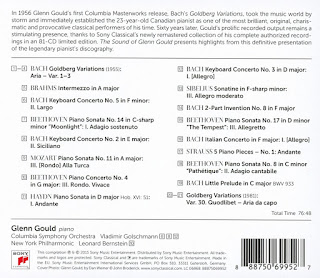"All told, a highly recommended disc, for its unfamiliar repertoire and the high quality of the performances." --FANFARE
"All three works on this recording were written in 1946, one of the darkest years for Russian culture. There was a real pogrom in Soviet literature that year, which only served as a dress rehearsal for the pogrom of Soviet music two years later, when Shostakovich, Prokofiev, Miaskovsky, Khachaturian and many other Soviet composers of the highest rank were officially and publically reprimanded for writing 'formalist' music." --Yuli Turovsky

Titled Shostakovich’s Circle , this fascinating program is tied together by a pair of conceptual threads: All three works were composed in 1946, and both German (or Herman) Galynin (sometimes Galinin) and Galina Ustvolskaya were students of the maestro’s at the Leningrad Conservatory. Galynin is by far the lesser known. He studied with Shostakovich from 1943 to 1948, while he was in his early-20s, and later received a Stalin Prize for his Epic Poem on Folk Themes , but apparently had mental difficulties throughout his life and died in 1966 from causes related to his schizophrenia. Though his catalog of works is small, Melodiya did record several pieces during the 78-rpm and LP eras, including his piano trio, two string quartets, and at least three versions of this concerto, none of which are currently available. Barry Brenesal reviewed a recent release of solo piano pieces in Fanfare 32:2, citing his “imaginative” use of less-than original materials. There’s nothing particularly original about the concerto, either, but despite the fact that it was a student work it is well made and exhibits passages of serious expression in the slow middle movement. The shift to a dark and introspective mood after a bold and boisterous first movement no doubt reflects the influence of his teacher, and there are some familiar Shostakovich touches in the orchestration, such as the prominent xylophone and the piano’s suggestion of tolling church bells. The lighter mood returns in the scampering finale; Shostakovich called this movement “somewhat superficial,” but it might have been composed earlier, when Galynin was studying with Miaskovsky.
Even more impressive, however, is the Piano Concerto of Galina Ustvolskaya. A pupil of Shostakovich’s from 1937 to 1941, she quickly developed a modernist slant that some scholars and critics feel may have in turn influenced her teacher—and, in fact, it is said that Shostakovich proposed marriage to her following the death of his first wife. Her starkly textured, succinctly organized, spiritually intense later work finally received some deserved attention in the 1990s, but the Piano Concerto, her earliest work extant, reveals a debt to not only Shostakovich, but Prokofiev and Bartók as well. A single movement essaying several distinct episodes, it pits the brittle, often bitter piano against an orchestra that is seldom comforting or supportive; even in calmer moments the mood is of anguish rather than respite, and melodies frequently lock into a paralysis of repeated motifs. Serhiy Salov does a remarkable job in this concerto—he attacks the toccata-like passages with fervor, and the grit in his tone suits the temperament of the music. He takes more risks than does pianist Oleg Malov in his performance (Megadisc), including the insinuation of an underlying hint of despair that makes the final C-Major chord seem all that more empty and ironic. The filigree of the Galynin concerto holds no difficulty for him, but the Ustvolskaya makes more interpretive demands, and Salov is up to the task.
Completing the program is Rudolf Barshai’s 1990 transcription of Shostakovich’s Third String Quartet for strings, winds, and harp. My preference is for the lean textures and wry demeanor of the original instrumentation, but conductor Yuli Turovsky, himself a graduate of Moscow’s Tchaikovsky Conservatory, emphasizes its chamber-music origins and avoids the trap of attempting to turn the music into a full-blown symphony. All told, a highly recommended disc, for its unfamiliar repertoire and the high quality of the performances.
FANFARE: Art Lange

































